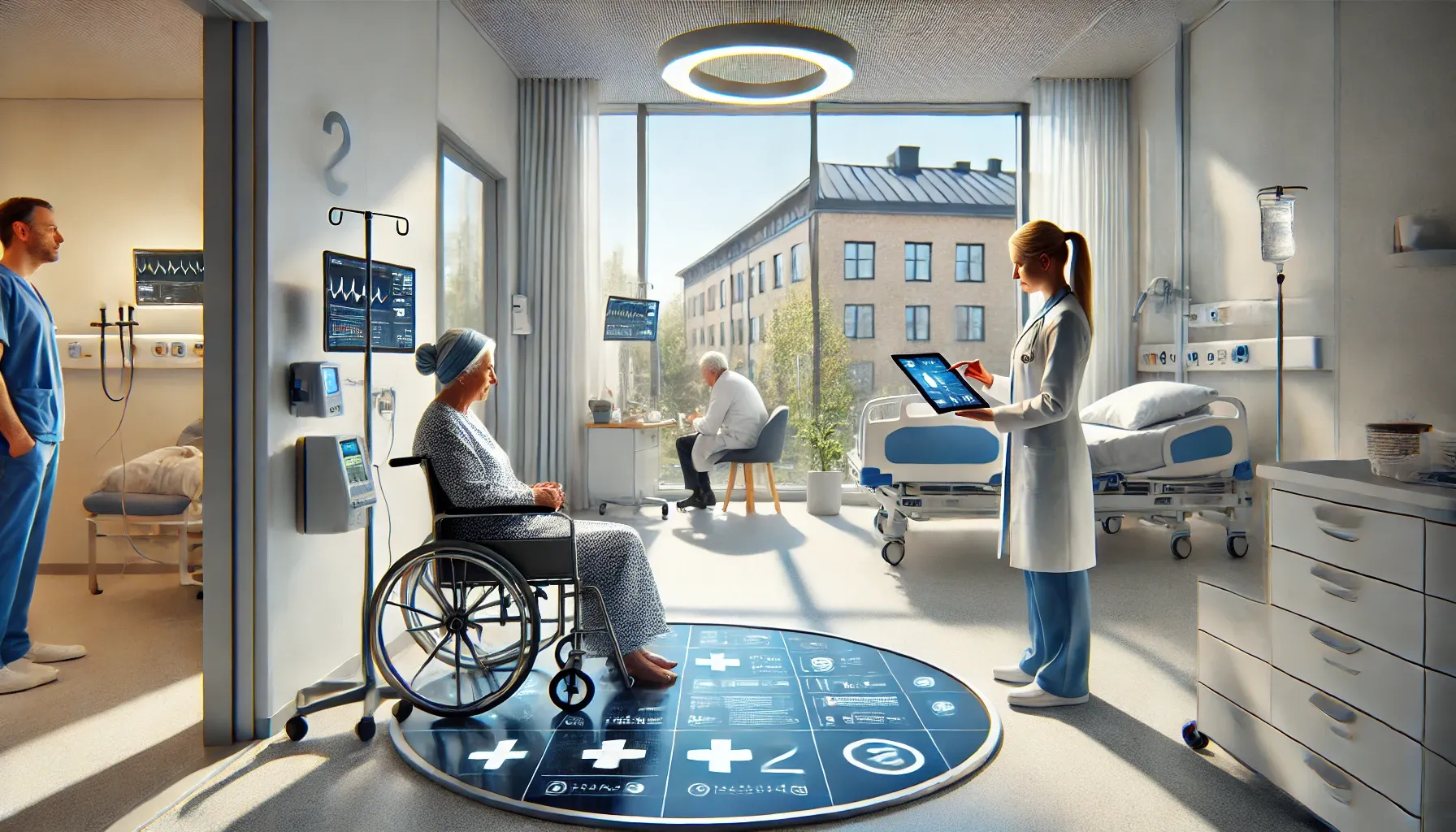What is the healthcare system like in Finland?

- What is the quality of medical services in Finland and what attracts foreigners to it?
- Why is Finland an ideal place for medical tourism?
- What are the features of medical services in Finland?
The quality of medical services in Finland
Finland is known for its outstanding healthcare system, which ranks fourth in patient satisfaction in Europe. This high rating indicates that treatment in this country is becoming increasingly attractive to foreign citizens looking to improve their health in one of the most progressive corners of the continent.
Health care financing
The standards of medical care in Finland are closely linked to its political structure, as about 9% of the state budget is allocated to healthcare each year. Per capita spending is around 2500-3000 euros annually. The main source of funding for medical services is taxes, and in case of a shortfall, local authorities can turn to the central government for subsidies.
Availability of services
This approach to financing allows citizens of Finland and foreigners with permanent residency to receive basic medical services almost for free, as a significant portion of the costs is covered by state funds. Moreover, for people with chronic illnesses, many essential medications are available without upfront payment. However, if a patient does not wish to wait in line, especially in the case of emergencies, they have the option to use paid medical services.
Standards and training of medical professionals
Every aspect of health care in Finland meets the international standards set by the World Health Organization. Training programs and licensing of medical professionals strictly comply with WHO requirements. In order to become a doctor in this country, it is necessary to complete about 12 years of training, which is significantly longer than in most neighboring European countries. This leads to the fact that specialists trained outside of Finland face serious difficulties in finding employment in local medical institutions. There are approximately 2,000 qualified doctors in the country.
Modern technologies in healthcare
The Finnish healthcare system is also distinguished by its high level of technological equipment. Modern technologies are available even in small district hospitals, where patients can undergo diagnostics and rehabilitation using up-to-date medical equipment. In larger institutions, the latest advancements in information technology and new laboratory diagnostic methods, such as bioresonance and thermoscopy, are actively utilized.
Conclusion
All of the mentioned factors make the Finnish healthcare system one of the most modern and effective in Europe. The effective implementation of strategies aimed at supporting and improving the health of the population is crucial for the continued success of this system. Finland demonstrates how rational allocation of funding and a high level of training for medical personnel can significantly enhance the quality of healthcare services in the country.
Advantages of medicine in Finland
Finland has excellent health care conditions, which makes the country very attractive to foreign patients, especially those requiring complex surgical procedures. According to statistics, the rate of complications from surgery and infections in hospitals here is the lowest in Europe. As a result, many people outside of Finland choose Finland for their medical procedures.
Geographical location for Russians
For Russians, an additional factor contributing to the interest in Finnish medical tourism is the close geographical proximity. Residents of the European part of Russia have the opportunity to quickly access high-quality medical services in Finland. A Eurocare study, which covers the life expectancy of people suffering from cancer in Europe, shows that Finland has achieved excellent results in breast cancer treatment. This country even outperforms strong players like Germany.
Leading positions in oncology
In addition, Finland ranks first in head and neck diseases, third in prostate cancer treatment, and fourth in colorectal cancer therapy.
Responsibility of Finnish doctors
It is worth noting the high level of responsibility among Finnish medical professionals. They will not start treatment if they cannot guarantee a positive outcome, and they will also refrain from recommending unnecessary procedures that could only increase medical bills for patients.
The structure of the healthcare system in Finland
The healthcare system in Finland can be divided into free and paid services, which is common in most countries. Private medicine here does not replace primary or specialized healthcare but serves as a complement to it. Private services include:
- Clinics
- Dental offices
- Physiotherapy institutions
- Practitioners
Free medical assistance
Every Finnish citizen has the right to free medical care with a valid health insurance.
Disadvantages of the government system
One of the downsides of the public healthcare system is the difficulty in accessing free services for serious laboratory and diagnostic tests, as well as for the treatment of rare diseases. In Finland, specialized university clinics address such issues. Here, examinations and treatments are also covered by insurance, but the patient will have to bear part of the cost of the services provided. This area of medicine is defined as specialized medical care.
Private medical facilities
In addition, the country has private medical institutions offering a wide range of medical services. Thus, the Finnish healthcare system, both free and paid, ensures high standards of medical care and supports the health of its citizens, attracting more and more patients from neighboring countries.

Medical services in Finland
In Finland, healthcare services are quite expensive, which is why access to them is often limited to wealthy citizens or those facing emergencies. For many patients, it is most optimal to purchase service packages, as this way the prices are fixed and there are no unexpected expenses. People with Kela health insurance can expect partial reimbursement for their medical costs.
Cost of medical services
The initial visit to a doctor can cost between 50 and 200 euros, while a blood sugar test will be around 35 euros, and an electrocardiogram (ECG) will be approximately 200 euros. Prices for magnetic resonance imaging (MRI) range from 500 to 1500 euros, but specific rates depend on the chosen clinic. It should be emphasized that all medical institutions in Finland are required to inform patients in advance about the final cost of services before they are provided.
Appointment with the doctor
Patients must strictly adhere to their scheduled appointment time, regardless of whether the service is free or paid. If for some reason a patient is unable to attend an appointment, the appointment must be canceled, usually one day in advance, or they may be fined.
Emergency medical assistance
Emergency services in the country can be reached by calling 112. However, it's important to remember that not every call to this service results in a team being dispatched: assistance is provided only in situations that genuinely threaten life. For example, a high fever, body aches, or elevated blood pressure are not sufficient grounds for calling an emergency service. In Finland, there is a fee of about 20 euros for ambulance services, and the bill is sent to the patient's address a few days after the call.
Medical insurance
In Finland, there is mandatory health insurance for all working citizens, which is part of the Kela social security system. It covers a portion of the costs for medical services, tests, and medications. The funding for this insurance comes from taxes on workers and contributions from employers. The amount of compensation depends on the established liability limit:
- If the maximum coverage is 300 euros and the treatment costs exceed this amount, the patient will only pay 300 euros, while the insurer will cover the remaining costs.
Foreigners and medical care
Foreign citizens can also expect to receive free medical assistance alongside local residents, provided they have a residence permit (kotikunta). However, many residents of the country prefer private health insurance, which costs approximately 115 euros per month.
Acquisition of medications
When it comes to medications, they can only be purchased at pharmacies in Finland. Therefore, understanding the healthcare system in this country is essential to make the most of the available medical services and minimize your financial expenses.
Conclusion
In conclusion, I would like to emphasize that the healthcare system in Finland is one of the most efficient and high-quality in Europe. I am deeply impressed by how this country manages to harmoniously combine free and paid medical services, ensuring access to high-quality healthcare for all citizens and residents.
FinlandThe country, allocating almost 9% of its budget to healthcare, demonstrates its commitment to maintaining the health of its population and implementing modern technologies in medical care.
I noted the importance of training medical personnel in Finland – the process of educating doctors takes ten to twelve years, which certainly speaks to high standards of quality. This approach, along with advanced equipment and infection control measures, creates conditions for minimizing postoperative complications and internal infections, making Finnish medicine particularly attractive to foreign patients seeking serious treatment.
Advantages of the Finnish healthcare system
- High level of health care funding.
- A long process of training doctors that ensures high quality.
- Low level of postoperative complications and hospital-acquired infections.
- Access to modern medical technologies.
In addition, it is important to note that the existence of two different systems - free and paid - allows everyone to choose the best conditions for receiving medical care.
Private clinics serve as an excellent complement to the public healthcare system, reducing the burden on major medical facilities and providing patients with an alternative in case of long waits for free services.
All of the above makes Finland an ideal destination for medical tourism, especially for citizens of neighboring countries like Russia. I hope this overview of Finland's healthcare system will be helpful for anyone seeking quality medical care and wanting to learn more about the opportunities this country offers.
Comment
Popular Posts
9 October 2024
3502
9 October 2024
283
Popular Offers




Subscribe to the newsletter from Hatamatata.com!
Subscribe to the newsletter from Hatamatata.com!
I agree to the processing of personal data and confidentiality rules of Hatamatata


